|
Cedar Tree Technologies CT4
Rugged computing experts offer economically priced, dual-SIM, fully rugged, IP68-sealed and remarkably advanced 4.3-inch Android handheld designed for harsh environments
By Conrad H. Blickenstorfer; photography by Carol Cotton
Cedar Tree Technologies, launched in 2014 by the founders of Juniper Systems and partnering with leading industry software providers, provides rugged Android tablets, handhelds and smartphones for the construction and similar industries. One of their initial products is the strikingly designed, economically priced rugged CT4 handheld computer. Right upfront: how economically priced? That'd be US$489, unlocked, no contract, rugged, and from a company that understands rugged devices and customers who buy rugged devices. We have a Cedar CT4 in our office, and in this report we tell what you can expect from it.
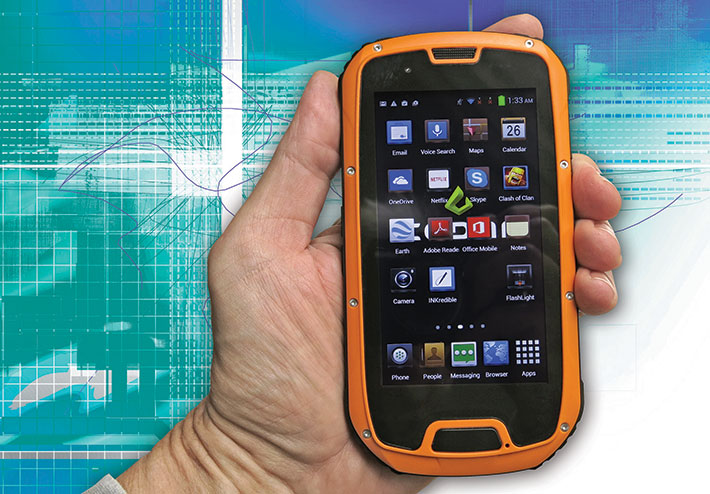
I must admit, at first it's a bit hard to totally wrap your mind around this flashy orange and black Android economy-priced smartphone from a brand-new company up in Oregon. There are so many questions about phones and handheld computers these days. This is a time where US telecommunications carriers do whatever it takes to lock in subscribers to long-term contracts, long-term phone purchase installment plans for locked phones, and the outright purchase price for a phone that'll quickly be obsolete exceeds that of many giant-screen HDTVs. It's also a time where phones are growing ever larger, to the extent where a clash with tablets seems inevitable and it's no longer clear what belongs on a tablet and what on a phone. And it's a time where Windows Mobile (now called Windows Embedded Handheld) continues to be used in traditional vertical markets even though consumer markets have long since moved on to iPhones and the Android juggernaut it fostered, and some to newer Microsoft phones that are not compatible with the older mini OS. So where does this inexpensive, unlocked rugged Android phone fit in?
There is no definite answer to that. Cedar Tree Technologies seems a company comprised of seasoned professionals from the field of rugged handheld computing who asked themselves the above questions. And then concluded it might make sense to provide a place where customers would find not only expertise in their field and ways of doing business, but also innovative hardware at prices far below the level customary in traditional vertical markets.
Quest for just the right size, price and ruggedness
There no longer being clear boundaries between handhelds and tablets in terms of size and areas of deployment, the folks at Cedar decided to offer three very different choices, one being a tiny minimalist phone, another (their CT7) large enough to clearly be a tablet and not a phone, and then the CT4 which fits smack in the middle of what late 2014 is considered a phone.
That picture to the right puts things in perspective in terms of size. The lineup shows — from left to right and in scale — Apple's iPhone 5, the new iPhone 6, the 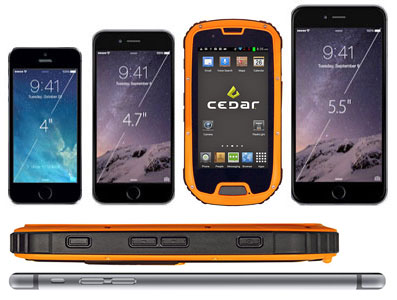 Cedar CT4, and the big iPhone 6 Plus. The Cedar CT4 measures 5.7 x 2.8 inches, fitting neatly between the iPhone 6 and iPhone 6 Plus in terms of frontal size. In terms of actual screen size, with 4.3 inches diagonal it sits between the 4-inch iPhone 5 and the 4.7-inch iPhone 6. Cedar CT4, and the big iPhone 6 Plus. The Cedar CT4 measures 5.7 x 2.8 inches, fitting neatly between the iPhone 6 and iPhone 6 Plus in terms of frontal size. In terms of actual screen size, with 4.3 inches diagonal it sits between the 4-inch iPhone 5 and the 4.7-inch iPhone 6.
There are differences, of course. The CT4, as a ruggedized device, is 0.83 inches thick, and weighs 9.6 ounces. That's considerably thicker and heavier than today's consumer smartphones, but it's actually no thicker or heavier than Microsoft platform Pocket PCs from the likes of Casio or Compaq used to be, and those were not rugged devices and had much smaller screens.
The picture to the right also shows how the CT4 compares in thickness to the iPhone 6+.
As far as ruggedness goes, in this era of ever larger and slimmer phones that flex and bend, the difference between consumer products and truly rugged devices has never been bigger. There are, however, some consumer phone companies, such as Samsung, that now offer "active" versions of their phones that look hardly different from a standard issue model but are largely waterproof. And the first thing most consumers do when they get a new phone is buy a case for it.
The Cedar CT4, on the other hand, is unabashedly rugged. While Cedar isn't publishing as many ruggedness specs as we'd like to see, the CT4 is IP68-sealed (which means it's completely waterproof) and it can handle 10-foot drops. And there's Gorilla Glass, and corner guards and protective doors. It's definitely rugged.
Tech and spec
As for the technology under the hood, the Cedar CT4 uses a 1.2GHz quad-core Cortex A7 MediaTek MTK6589 processor that's based on the ARMv7 instruction set and also includes an PowerVR GPU.  This is a popular chip introduced in mid-2013 and used in long list of smartphones. It employs 28 nm process technology and can give its mostly QualComm-based competition a good run for the money. This is a popular chip introduced in mid-2013 and used in long list of smartphones. It employs 28 nm process technology and can give its mostly QualComm-based competition a good run for the money.
There's a gigabyte of LPDDR RAM and 4GB of Flash for storage. If 4GB seems modest to Apple aficionados compared to the usual 16/64/128GB in their iPhones, the amount of built-in storage hardly matters if the device can use expansion cards. So for the CT4 it's the 4GB plus what's in its user-accessible (and well-sealed) micro SDHC card slot.
There is an 8mp documentation autofocus camera with LED flash on the backside, and a 1.2mp vidcam in the front. While there's recently been a drive to push the megapixel count by some manufacturers in an effort to differentiate themselves, this pixel count is what Apple uses in its iPhone 6 and 6 Plus, and it compares favorable with most rugged smartphones/handhelds out there.
Cedar claims the unit's non-removable 11.3 watt-hour Li-Ion battery, which so happens to be of the same capacity as that of the iPhone 6 Plus, allows all-day operation. Charging is via a standard micro-USB port.
The CT4's outdoor-readable display measures a handy 4.3 inches diagonally, which is larger than most displays found on rugged and industrial handheld devices. Those who intend to use the device for mapping and GIS applications will certainly appreciate the extra space. This being an Android-based smartphone, it's no surprise that the CT4 uses projected capacitive ("procap") multi-touch instead of the resistive digitizer common to almost all older handhelds and even a good number of more recent ones. This being an Android-based smartphone, it's no surprise that the CT4 uses projected capacitive ("procap") multi-touch instead of the resistive digitizer common to almost all older handhelds and even a good number of more recent ones.
Whether or not to use capacitive touch in industrial devices has been an intense topic of discussion, with the major argument against it that the technology doesn't work in the rain or with gloves on.
While that is mostly true, it rains for consumers, too, and that hasn't stopped consumer market capacitive touch smartphones selling by the hundreds of millions. Fact is, the elegance and ease of use of capacitive touch make it a technology where the benefits outweigh the limitations.
Like almost all modern smartphones, the CT4 senses what's going on and can react accordingly. There's a 3-axis accelerometer for motion-dependent apps and functionality, an e-compass, and an ambient light sensor to adjust backlight intensity. Wired connectivity is via micro-USB 2.0.
For wireless connectivity there is Bluetooth v2.1, 802.11b/g/n WiFi, and mobile broadband of the 2G GSM/GPRS/EDGE (in the 850/900/1800/1900 MHz bands) and 3/3.75G WCDMA/HSPA 850/2100 variety.
The picture to the right shows the Cedar CT4 from the front and from all four sides. It's a ruggedly handsome, elegant design along the lines of some of the more stylish tools for jobs and in the field. Our eval was black and bright orange, with the orange making the device easy to see and find. Cedar Tree will also ship other colors.
Going around the Cedar CT4 there isn't much to see. This is an IP68-sealed device, and that means the fewer openings that must be sealed against immersion the better.
The left side has a number of physical push buttons: Power, volume up and volume down, and a PTT (Push-To-Talk) button. On the right side are the unit's earphone jack and micro-USB port, each under a separate thick rubber plug. Nothing on the top or the bottom.
The front of the CT4 has the display whose surface glass, as is usually the case with capacitive touch devices, extends well past the actual LCD screen perimeter. Beneath the display are three controls, a physical Home key flanked by a Menu touch area on the left and a Back touch area on the right, both very faint. That's a bit different from the usual three standard Android buttons/touch areas (Back, Home, and Multitask), and the "Menu" Android button officially vanished with version 4.0. We liked the physical Home button, as it works under any and all environmental conditions.
An inside look at the Cedar CT4
The reason why devices like the Cedar CT4 exist is that over the past few years form has stopped following function in smartphone design. Mobile phones are supposed to be small, handy devices (in most European countries the word for mobile phone is actually "handy") that fit anywhere and can be used anywhere. That, with all due respect to Apple and Samsung et al, is no longer possible with today's giant waver-thin consumer phones.
The Cedar CT4, on the other hand, is very clearly a tool for the job. It looks like something you'd get at the local Home Depot and not in a boutique-like Apple store. But is that impression more than skin-deep? Let's find out.

The CT4 has a small card department in its backside. The compartment provides access to the unit's microSD card slot as well as two SIM card slots, one for an older style 2G GSM SIM and one for a 3/3.75G WCDMA SIM.
The compartment has a removable plastic cover held in place via two thumb screws and a tongue-and-groove pressure seal to keep dust and liquids out.
The housing of the impressively solid phone consists of a very rigid black polycarbonate box with an alloy frame in it, an intricate orange back cover, and an orange polycarbonate front bezel.
Opening the housing requires a Torx T5 screw driver. There are eight little Torx screws that securely fasten the back cover. Once those are removed, the backside of the CT4 very easily lifts off.
There are no wires between the main body of the device and the back cover, which is made of orange polycarbonate material with decorative black plastic overmoldings.
Inside, the CT4 is remarkably spacious and without the jam-packed, cramped look of so many small electronic devices today where the quest for extreme thinness forces maximum integration and filling of every square-millimeter. The main and subsidiary boards are all mounted on an internal metal-alloy frame that adds even more strength to the assembly.
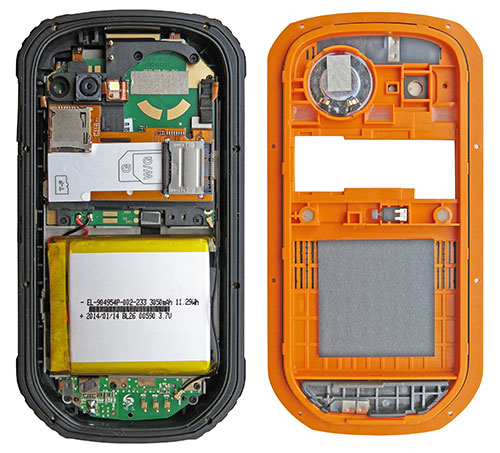
This being an IP68-rated device, which means it's fully submergible for extended periods of time, we did expect a high quality seal between the two halves. What we didn't expect was two seals.
Apparently, the CT4's designers wanted to make extra sure the device is indeed totally waterproof, and so they created a dual seal.
This double seal consists a) of a contoured replaceable pressure seal that sits in a wide groove in the main body of the device, and b) an also replaceable o-ring rubber seal running around the perimeter of the orange back cover, similar to the sealing mechanism that scuba dive lights use.
We've never seen such a dual-seal arrangement. If these seals are properly seated and maintained, no liquid will ever get inside the unit this way!
As is often the case in handhelds targeted at different markets with different requirements, the CT4's electronics are modular. This way, cameras, expansion cards, antennae and the like can easily be customized for different markets without the need for redesigning the main board.
The battery of the CT4 is built-in and non user-replaceable. It's easily accessible, though, and while the two connector wired are soldered onto the main board, a service department or technically savvy user could relatively easily remove it and replace it with a fresh battery.
The image compilation below shows some of the interesting details of the Cedar CT4. From left to right you can see a close-up of the two case seals, the rear camera module with its remarkably high-quality finish, the tiny motor for the phone's vibrate function, and the four internal antenna contacts.

Overall, the CT4's underlying construction is clean, convincing and well executed. It also shows how logically, solidly and accessibly a device can be built when the primary goal is to come up with a design that makes sense, rather than one that simply needs to be as thin as possible.
Contemporary display — 4.3-inch and procap multi-touch
The Cedar CT4's 4.3-inch display would have looked huge for a handheld just two or three years ago. Remember that the iPhone launched the modern smartphone era with a 3.5-inch screen, selling tens of millions, and it wasn't until September 2012 that Apple introduced the iPhone 5 with a larger 4.0-inch screen. Since then, of course, the consumer smartphone screen size dam has broken, with even Apple joining the trend initially introduced by Samsung in an effort to somehow differentiate itself from Apple.
As a result, the Cedar CT4 now looks quite compact, but its display is large enough to never get that "oh, this screen is much too small to work on" feeling so familiar to users of earlier Pocket PCs. It certainly also helps that the CT4 display is crisp and sharp. Its 960 x 540 pixel resolution is not quite "retina" class, but 240 dpi is still super-sharp and close to that of an iPad Air's 264 dpi. It's also far more than the original iPhone (163 dpi), let alone desktop such as the iMac27 this review was written on (about 108 dpi). And it's an IPS (In-Plane Switching) screen, which means it has perfect viewing angles from all directions.
The pictures below show a comparison between the Cedar CT4 and an iPhone 6 Plus outdoors, both at maximum brightness. Apple's big 6 Plus is said to have a maximum screen brightness of 550-600 nits. The CT4 specs don't include a nits rating, but under most conditions, it looks almost as bright. Both displays are glossy, so there are reflections outdoors. Most smartphone and tablet users have learned to live with that.

The picture below shows the two devices from the left and the right. Viewing a device from an angle may reveal color shifts in certain types of LCDs, but neither device suffers from that. The screen image remains perfectly viewable in unchanged from from any angle. We did notice a slight diminishing in brightness of the CT4 display wen viewed from an angle. That's likely due to the fairly thick glass and protective surface shield.

One slight weakness of the display is that in darker lighting conditions, the screen backlight sort of bleeds through the black background, especially near the left and right sides of the screen.
Capacitive multi-touch works as everyone expects from a handheld these days — quickly and effortlessly. The CT4's touch controller is more sensitive than that in most earlier capacitive touch devices. That means it can work when wearing certain types of thin gloves. The device doesn't come with a stylus and Cedar doesn't offer an optional capacitive pen. Any 3rd party capacitive pen will work, though those generic pens with their broad tips don't offer much more accuracy than the tip of a finger. It's not that important anyway as Android was specifically developed for capacitive multi-touch with a finger.
Cedar's commitment to Android
In consumer markets, the vast majority of non-Apple smartphones run Android, and even compared to Apple, Android has a commanding market share. That's quite different from vertical and industrial markets where Windows Embedded Handheld continues to hold on, with Android 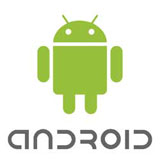 just now beginning to make inroads. As a result, many providers of ruggedized handhelds now offer both Microsoft and Android based versions of their handhelds. Cedar, on the other hand, has made a full commitment to Android and the great diversity of devices and platforms Android now runs on. just now beginning to make inroads. As a result, many providers of ruggedized handhelds now offer both Microsoft and Android based versions of their handhelds. Cedar, on the other hand, has made a full commitment to Android and the great diversity of devices and platforms Android now runs on.
Android, of course, will appeal to those who are already using Android smartphones and/or tablets at home or at work. Though often customized by providers, the basic workings of the Android interface are very widely known by now, and a very large number of apps are available for download. Android software development and expertise is commonly available, and making Android devices available on the job can save training as well as deployment costs.
Android contemplations
Among the most consistently hyped consumer smartphone features is the total number of apps, and how easily users can download apps. Apple has its massive App Store. Android users have the official 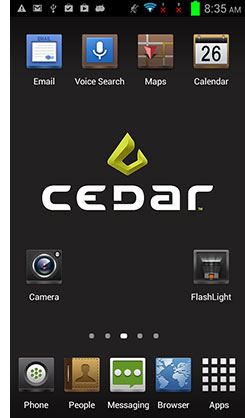 Google Play store, as well as third party alternates such as the Amazon Appstore for Android, Slide ME, and several others. Google Play store, as well as third party alternates such as the Amazon Appstore for Android, Slide ME, and several others.
An interesting issue facing Android in industrial and enterprise markets is that many businesses do not want their workforce download apps into devices used for work. What are the answers to this potential problem?
One approach is to use Android AOSP, which stands for Android Open Source Project, and is an open-source software stack and project, led by Google itself, but without the ability to use the Google Play store and some of the major Google apps. Android AOSP, however, still has access to alternate app stores.
Another possibility is using something like 42Gears.com's SureLock. SureLock replaces the Android desktop and allows control of applications that are available to users. It can even be configured to run in "kiosk mode" with just a single application that is always active. This way, systems integrators or IT personnel can configure units for specific use and applications, eliminating the temptation that comes with a full load of consumer apps.
The CT4 Cedar Tree Communications sent us for evaluation came not only with a basic selection of useful apps, but also with the official Google Play store. Google does make it possible to customize the look and feel of an Android device (and Cedar did add their corporate logo), and organizations can publish their own Android apps or officially sanctioned apps privately to a dedicated company-owned channel on Google Play.
The images below are screen shots of a variety of apps the Cedar CT4 came with, and apps that we downloaded from Google Play, just like a Cedar customer might personalize his or her own device.
The first image below shows the Google Play screen (left) and then Skype and Netflix, two apps that he have on all of our personal devices.
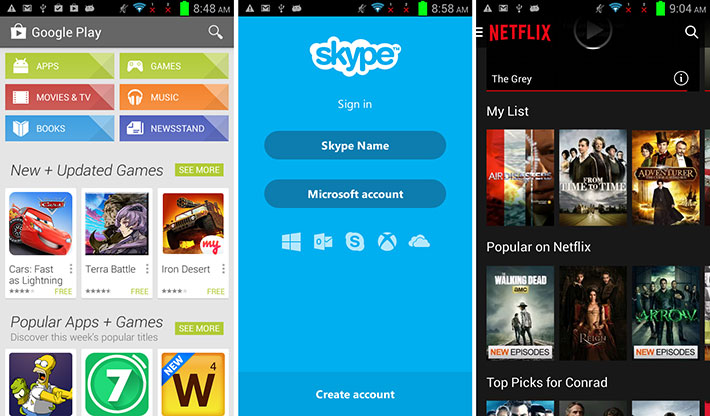
One of the reasons why consumers have accepted ever larger displays on their phones despite the bulkiness that comes with all that display real estate is that web browsing is so much more pleasant on a larger display.
4.3 inches diagonal still isn't very large for browsing, but combined with the CT4's high resolution and snappy performance it's quite useful. We're pretty sure most CT4 users will use their devices for browsing, and the CT4 does it well. Pinching and zooming are instant and the user multi-touch user interface is pleasant and fluid. The keys on the onscreen keyboard are a bit small if used in portrait mode, though, and those with larger fingers will likely prefer landscape for typing in URLs and such.
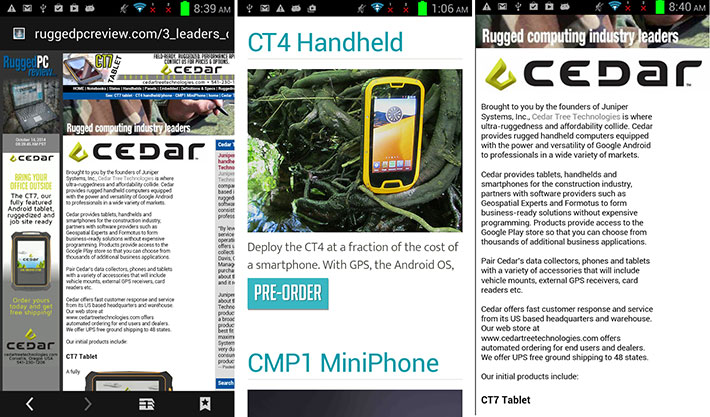
While there are a number of office suites available for Android, enterprise and business users often insist on Microsoft Office. An Office 365 client has been available for Android for a while, but it used to require a Office 365 subscription to edit documents and store them in the cloud. As of November 2014 that's no longer the case. Office can be downloaded and used for free on mobile devices. Office Mobile, of course, is far from a complete implementation of the full Office 365, but it works well enough. Below are the Office Welcome screen, and some quick checks to see if Office documents we had stored in Microsoft's OneDrive were accessible and worked (they did).
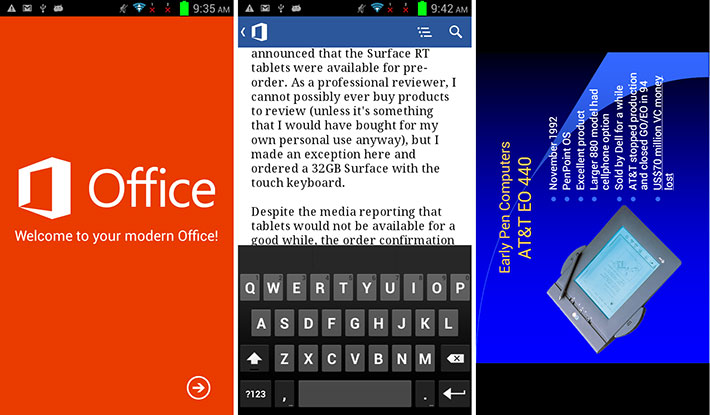
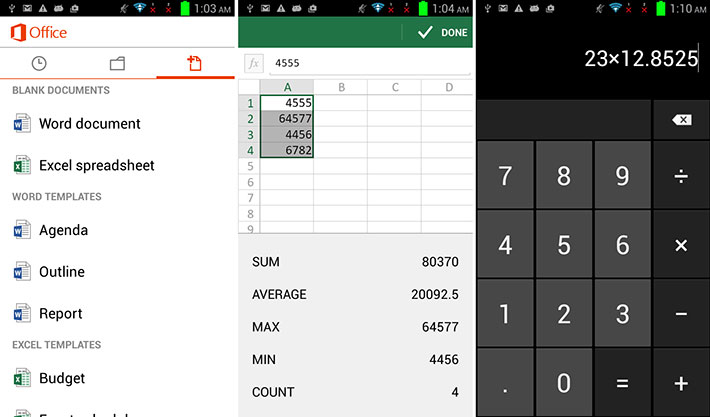
Next on the list of our downloads from Google Play was Google Earth. The below sequence of screen shots shows Google Earth, mapping with traffic information, some of the stunning 3D imagery now available on Google Earth, and also an example of Street View.
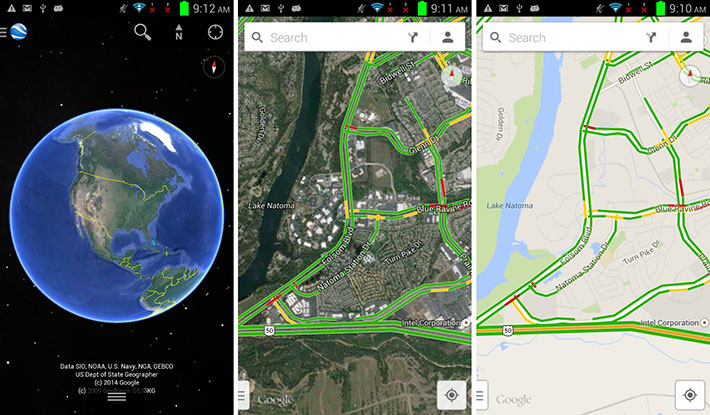

Poking around a bit further on Google Play yields any number of free or inexpensive apps that demonstrate and highlight the CT4's capabilities and uses.
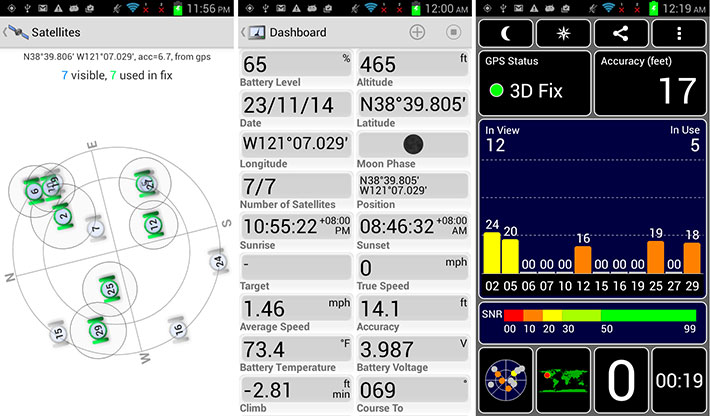
Further exploring of our eval CT4 included some of the preloaded apps, like the cool Flashlight app (we're glad that despite Apple's Jonathan Ives' best efforts to make everything flat and lifeless, many Android apps are still gloriously 3D and reminiscent of real life objects). There's a cool compass app, and the CT4 had no problems at all accessing and downloading the vast numbers of images we have stored on Microsoft OneDrive.

This being a review of the Cedar CT4 and not of Android and Android apps, we'll stop here with describing and showing all the cool things you can do with Cedar's affordable, rugged CT4. So in closing just a quick reference to some data capture and entry methods. Voice recorders are available, of course. For those who like to draw and doodle, there are numerous great apps. And, of course, there are any number of note taking apps as well.
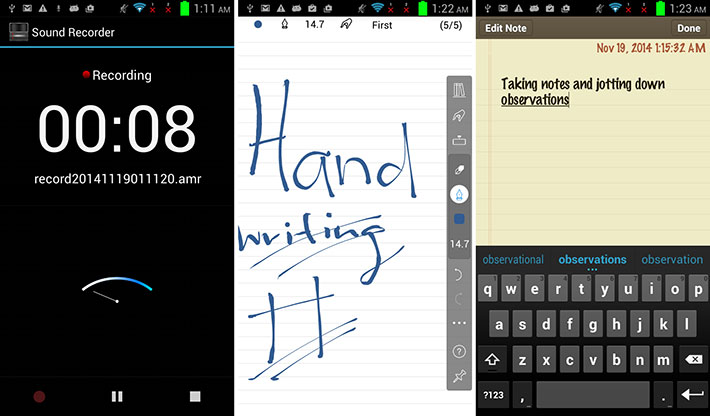
And while the CT4 platform does not include a dedicated scanner, the camera is plenty good enough to work with scanner apps of all sorts that use the built-in camera.

Phone functionality
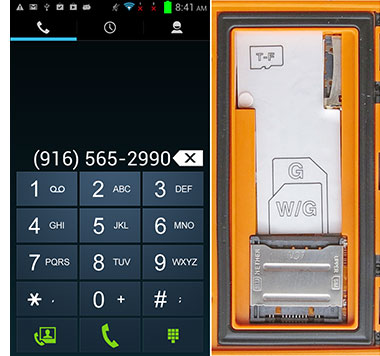 A few years ago, any detailed review of a rugged smartphone would have concentrated on its functionality as a phone. We would have discussed phone features, controls, etc. That's all changed now as smartphones, including rugged ones like the Cedar CT4, are really small personal computers that also so happen to allow voice communication. A few years ago, any detailed review of a rugged smartphone would have concentrated on its functionality as a phone. We would have discussed phone features, controls, etc. That's all changed now as smartphones, including rugged ones like the Cedar CT4, are really small personal computers that also so happen to allow voice communication.
Everything that used to set one phone apart from another has essentially vanished or has become part of whatever service one's cell service provider offers.
As is, the Cedar CT4 has neither traditional physical phone answer or hangup buttons, nor a physical keyboard. Everything is touchscreen operated.
Some customers may use the CT4 without traditional phone service at all, simply relying on messaging or skyping on WiFi or with a data service. But if a customer does need to use the device as a phone, the CT4 is an unlocked device and will work with whatever cell service is available pretty much anywhere in the world.
The picture to the right shows the CT4's phone app home screen as well as the device's dual SIM compartment where users can insert either a standard 2G GSM SIM card or a 3/3.75G WCDMA SIM card or both.
Very good cameras
The Cedar CT4 has both a front and a rear camera, as one would expect from a modern smartphone. The front one is for video calls and such, and packs 1280 x 960 pixels. The rear one is for picture taking and documentation. It has an 8 megapixel imager with up to 3,264 x 2,448 pixel resolution. Both cameras can be used for stills as well as for video.
In general, our experience with cameras integrated into rugged vertical market handhelds and tablets has been underwhelming, with even the better ones lagging far behind what's available in dedicated point & shoots and consumer smartphones. We're happy to report that the Cedar CT4 is a welcome exception. The rear-facing documentation camera of the CT4 is very good. In fact, the test pictures we took with the CT4 came very close in quality to those taken with the new iPhone 6 Plus. That's remarkable.
The screen snaps below show some of the camera settings screens, and what it looks like in picture-taking mode.

The user interface is quite elaborate, with 14 scene settings, 7 color effects, 8 white balance settings, +/-3EV exposure control, face detection, 2/10 second self timer, 40 or 99 continuous shots, picture sizes from QVGA all the way up to 8mp, ISO settings from 100 to 1600 and auto, HDR capturing, panorama shooting, and more. When using the front camera, the focus can follow your face automatically, which comes in handy if you move around a lot.
Pictures can also be edited right on the CT4, with color effects available, as well as frames, cropping, straightening, mirroring, numerous filters, and even such advanced operations as sharpening, hue, vibrance and curves. And the camera even supports social media. You can directly send images to Picasa, Messaging, email, Skype, OneDrive or whatever other social media apps you have on the device. And they can also be converted to PDF.
For video, audio mode has a special meeting recording setting, the mic can be turned on and off, you can do time lapse video with pics shot every one to 10 seconds, and you set set video quality. Video appears to record in 720p (1280 x 720 pixel) mode, with no other size settings apparent.
Having all those many settings and features available will be important to some users, but what really sets the CT4 camera apart is its speed and quality. We'd have no hesitations to use the CT4 to document jobs both in stills and in video.
The pictures below were shot with the Cedar CT4 in 8mp mode. Click on the image to bring up a full-size version.
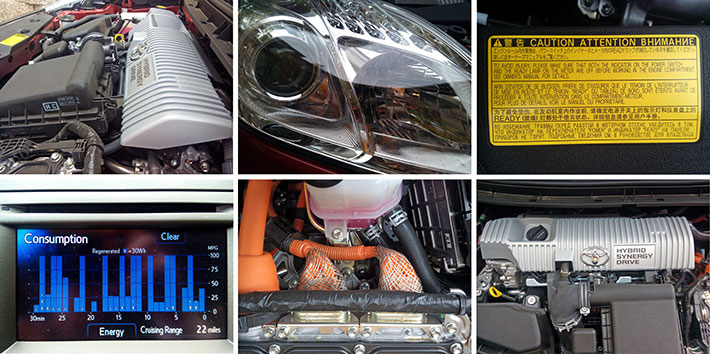
The Cedar CT4 camera is capable of taking much better pictures than we generally see from industrial handhelds. There is very good sharpness and image detail, and little of the massive compression that often renders pictures from such integrated cameras useless.
Video is also much better than what we're used to seeing from cameras integrated into rugged devices. Frame rate and focussing are very quick and the camera never falls behind. The maximum 1280 x 720 recording format is very useful, though we wish full 1080p were available also (the CT4's 8mp imager should easily be able to do it). The video to the right was taken with the Cedar CT4 camera in 720p resolution. It's an example of a clip that a mechanic might shoot as an attachment to a work order.
Note that the camera applications that come with mobile operating systems are often replaced with third party applications optimized for certain tasks, or developers and systems integrators include camera and video functionality directly into custom applications.
Bottom line here is that the still image and video functions of the Cedar CT4 are plenty good enough for virtually any documentation jobs.
Ruggedness — plenty tough, but where are the specs?
The CT4 is clearly designed as a tough and rugged outdoor device, and our detailed examination of its seals and structure revealed that it's as tough as it looks.
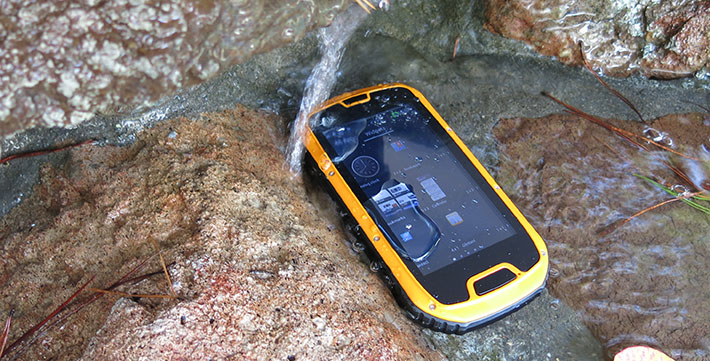
Yes, and that's what truly sets the Cedar CT4 apart from those hundreds of millions of consumer smartphones. It's tough and rugged and can survive out there in the field.
First, the CT4 carries IP68 sealing where the "6" means it's totally dustproof, and the "8" that it is also sealed against, as the IP classification system says, "long periods of immersion under pressure." While IP67 sealing — surviving immersion down to about three feet for a limited time — is increasingly common, IP68 is rare to find. What usually accompanies IP68 ratings, though, is the degree of pressure. Waterproof cameras, for example, are always rated for how deep they can go. All this is academic with the CT4 because it's not a diver camera and there are no physical buttons to control the device under water.
The device can also handle drops from an incredible ten feet. Consumer phones may survive a four foot drop inside a third party case, and even then there are no guarantees that they can survive a drop, let alone multiple drops.
Unfortunately, that's the extent of official ruggedness information from Cedar. In general, ruggedized handhelds such as the CT4 are tested in accordance with MIL-STD-810G procedures and standards for a variety of ruggedness criteria. Vibration, for example, can be a big issue if a device rattles around in a vehicle or if it's mounted on something that vibrates a lot. Users may also want to know the operating temperature range of the device, its ability to handle altitude, shock, and other punishment.
As is, we're quite confident that the Cedar CT4 will hold up well in the field, even under tough conditions. Its basic structure and design are very sturdy, its sealing is impeccable (but make certain all protective plugs are firmly in place), Gorilla Glass protects the display, so all that's missing are some official test results.
Summary: Cedar CT4 — a competent rugged handheld, for (a lot) less
This review of Cedar Tree Technologies' CT4 turned out to be a lot longer than we anticipated. That's because it brought up a number of interesting questions. In the US at least, the norm is premium smartphones that are usually locked to a single service provider and cost so much that customers buy them at a smaller upfront cost that is subsidized with either a 2-year contract or installment payments. It's a frustrating model, especially since smartphones become obsolete very quickly and often don't last very long.
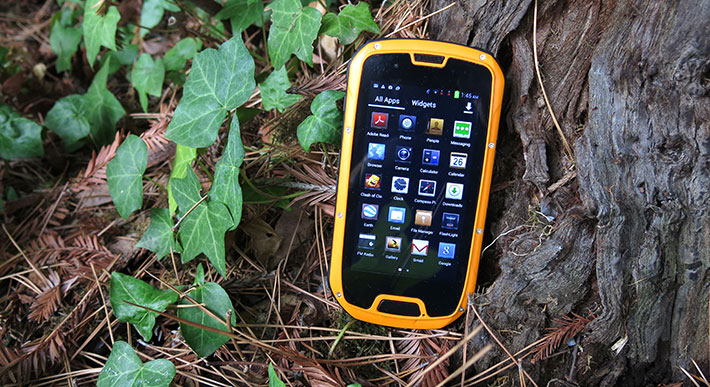
The Cedar CT4 is totally different. Even though it is a fully rugged device, unlocked it costs just about half as much as an unsubsidized 128GB iPhone 6 Plus (US$489 vs. US$949). True, the CT4 is not the technological tour-de-force the iPhone 6 platform is, and many of its specs aren't bleeding-edge state-of-the-art. But they are remarkably close to it, close enough that few will find this phone lacking.
Seen in the larger context of the current smartphone market where there's a very wide range from inexpensive "white box" and prepaid products all the way up to the super-premium class, the CT4 could be described as a super-premium version of a white box product that's been carefully selected by a US company that knows exactly what's needed for rugged jobs in the field.
Pricewise, even US$489 is still a lot when compared to the absurdly inexpensive small tablets available from major vendors such as Amazon, Google, HP, Dell, Toshiba, and so on. However, that same US$489 is only a fraction of what many traditional rugged handhelds cost, and compared to most of those, the CT4 is as rugged or more so, and it's technologically much more advanced.
Now add to that Cedar's partnership with a variety of companies that offer business-ready, field-ready applications for data collection, digital mapping, geotagging, etc., and we may be onto something big here.
-- Conrad H. Blickenstorfer, November 2014
Cedar Tree Technologies CT4 Specs:
| Added/changed |
Added 09 2014, full review 11/2014
|
| Type |
Android handheld
|
| Processor |
1.2GHz Quad-core Cortex A7 MediaTek MTK6589
|
| OS |
Android 4.2.2
|
| RAM/ROM |
1GB/4GMB (max. 32GB) |
| Display |
4.3" widescreen 960 x 540 pixel (240 dpi) IPS TFT with Gorilla Glass |
| Digitizer |
Projected capacitive multi-touch |
| Keyboard/keys |
Onscreen
|
| Navigation |
Touch
|
| Expansion slots |
1 x micro SDHC, 2 x SIM card (GSM/WCDMA)
|
| Housing |
Polycarbonate housing, alloy chassis, elastomer corner guards
|
| Size |
5.7 x 2.87 x 0.83 inches (145 x 73 x 21 mm)
|
| Weight |
9.6 oz. (270 grams)
|
| Operating temperature |
Unknown |
| Ingress protection |
IP68 (totally dustproof, sealed against long periods of full immersion) |
| Humidity |
Unknown |
| Drop |
Up to 10 feet |
| Vibration |
Unknown |
| Altitude |
Unknown |
| Tumble |
Unknown |
| ESD |
Unknown |
| Power |
Internal, non-removable 3.7V 3,050mAH 11.3 watt-hour Li-Ion |
| Regulatory |
Unknown |
| Camera |
Front: 1.2mp (1280 x 960); rear: 8mp auto-focus (3264 x 2448) |
| GPS |
TBD |
| Scanner |
NA |
| Sensors |
Ambient light, proximity, 3-axis accelerometer, 3-axis magnetic field |
| Communication |
802.11 b/g/n WiFi, Bluetooth v2.1, GSM/GPRS/EDGE 850/900/1800/1900 MHz, WCDMA/HSPA 850/2100 |
| Interface |
1 x micro-USB 2.0, 3.5mm audio |
| Price |
US$489 |
| Spec sheet |
 Cedar CT4 brochure (PDF) Cedar CT4 brochure (PDF)
|
| Web page |
Cedar CT4 web page |
|



